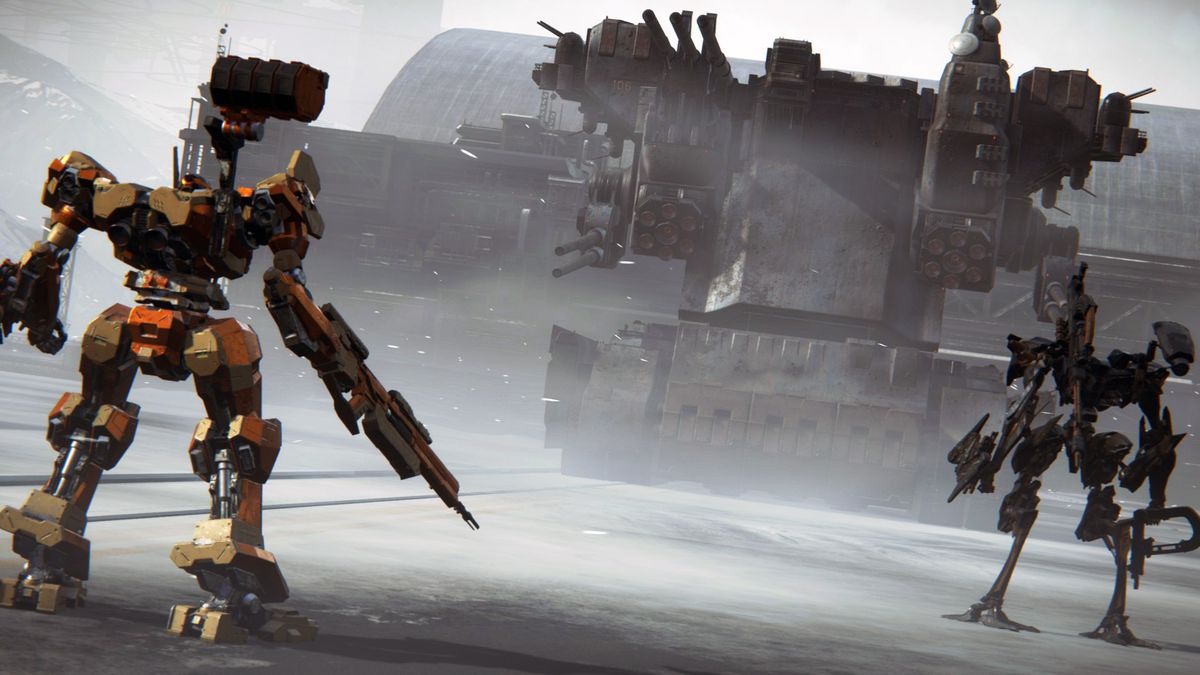The infinite darkness of space is a canvas upon which humans frequently paint our fears. Aliens, monsters, gods all occupy space “up there” as we yearn to figure out our own sense of place “down here.” Fort Solis, a third-person linear narrative thriller, tries to tap into the tension that space is meant to evoke.
It has gorgeous graphics, impressive voice acting performances, and an interesting premise. But the game is hampered by frustrating mechanics, including the inability to run or sprint, and an over-reliance on quick-time events. Worst of all, Fort Solis’ storytelling is so linear that the player’s choices don’t seem to impact narrative outcomes at all.
In 2080, Jack Leary (voiced by Red Dead Redemption 2’s Roger Clark) is part of a two-person engineering crew on Mars. He responds to a distress beacon at a nearby mining base, the titular Fort Solis. However, no one appears to be around, and there are signs someone or something is sabotaging the base. Jack must find out what happened to the skeleton crew and what is causing the ongoing emergency.
I spent most of the game exploring the abandoned station, examining workers’ quarters, rec rooms, and various worker hubs. I found work stations abandoned, and explored greenhouses and lab stations where work seemed to have been stopped halfway through. As I wandered, I interacted with audio and video logs of the missing crew to piece together what people at the station were “really” doing and eventually what happened.
:no_upscale()/cdn.vox-cdn.com/uploads/chorus_asset/file/24864654/fortsoliscar.jpeg)
This is the most linear game I’ve played in some time. Player actions don’t appear to influence the story in any way. There are no dialogue options, decisions, or apparent moral repercussions to player input. Indeed, the game’s design didn’t really let me contribute at all outside of basic exploration during its five-hour run time.
Fort Solis is visually beautiful and well performed, at least. I loved the game’s atmosphere, particularly the gorgeous retro sci-fi aesthetic and liminal spaces the talented artists created. To add to that, the game has some stunning sound direction that often gave me goosebumps.
The main cast also pulled out all the stops. Roger Clark will live in infamy as Red Dead Redemption 2’s Arthur Morgan — and in Fort Solis, we hear his natural Irish American accent that might surprise those who are more familiar with his previous roles. Even minor characters who appear for mere seconds deserve praise for great performances. As a result, dialogue feels natural and believable.
Unfortunately, Fort Solis is also hampered by aggravating design choices. The game has no sprint or run feature. Considering how much walking is involved, this was incredibly frustrating, since Jack ambles ahead slowly. There’s no denying the visual beauty of Mars, including Fort Solis’ impeccably designed interiors. But no amount of aesthetic beauty could make up for having to hold down one button for minutes at a time, with no faster movement speed as an option.
The game’s map is also utterly incomprehensible and did little to aid navigation — in fact, quite the opposite. The map merely provided digital blueprints or floor plans, but I always struggled to understand where the character was in comparison to certain rooms or goals, let alone how to navigate. Players are better off reading doors and entryways than the map.
:no_upscale()/cdn.vox-cdn.com/uploads/chorus_asset/file/24864665/fortsolissideshot.jpeg)
Lastly, the game relies on QTEs and doesn’t offer any other combat options. And they happen abruptly, with minimal warning. While other games with QTEs will either play a sound effect, slow down, or convey some preemptive change to prep you that a QTE is occurring, Fort Solis just… does them. For example, I activated a cutscene while Jack was looking at a console. For about 30 seconds, I watched him examine it, look around, and chat to himself. Then a fight started, and the game presented what was a cutscene as a sudden QTE. Having sat back to watch the scene unfold, I was in no way prepared to suddenly “fight.” This happened constantly.
This could have been redeemed if the game told a thrilling story. But when I finally figured out the mystery driving the game’s narrative, it was… fine? The science fiction plot twist was similar to stories I’d read or watched before of planetary expeditions gone wrong, where humanity’s reach exceeded its grasp. It’s familiar ground that’s not considered in a new light. The lackluster storytelling felt hardly deserving of the menacing atmosphere, beautiful visual buildups, and heartfelt performances from the actors.
It didn’t help that the plot was buried amid its frustrating game design and lack of dialogue decisions — unlike other interactive thrillers, like Until Dawn or even Quantic Dream’s games.
Fort Solis has some impressive talent behind it, not least the artists and performers. But almost everything else drowns beneath a thick sludge of annoyance thanks to the stifling mechanics, such as the useless map, lack of sprint, and overreliance on QTEs for the underwhelming mystery. If Fort Solis had been a 4K YouTube video instead of a game, I imagine the experience would not have differed much. And maybe it should have just been a video. At least I could have fast-forwarded through the tedious walking sections that comprise most of the game.
Fort Solis was released on Aug. 22 on Mac, PlayStation 5, and Windows PC. The game was reviewed on PS5 using a pre-release download code provided by Fallen Leaf. Vox Media has affiliate partnerships. These do not influence editorial content, though Vox Media may earn commissions for products purchased via affiliate links. You can find additional information about Polygon’s ethics policy here.




